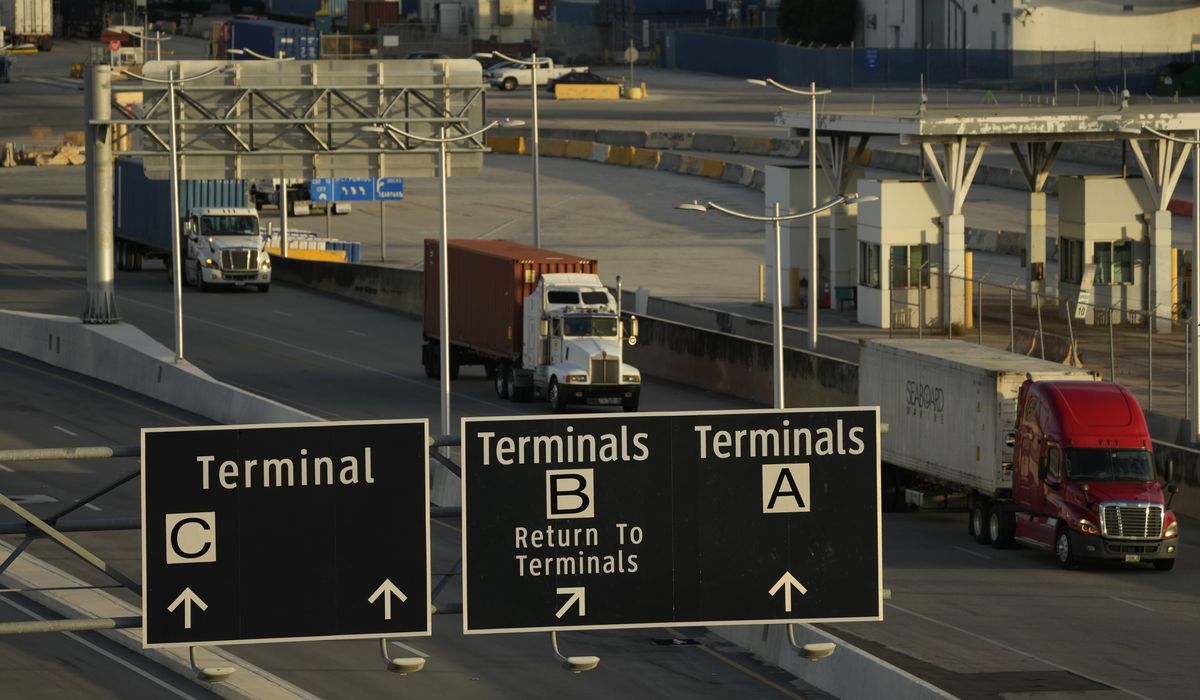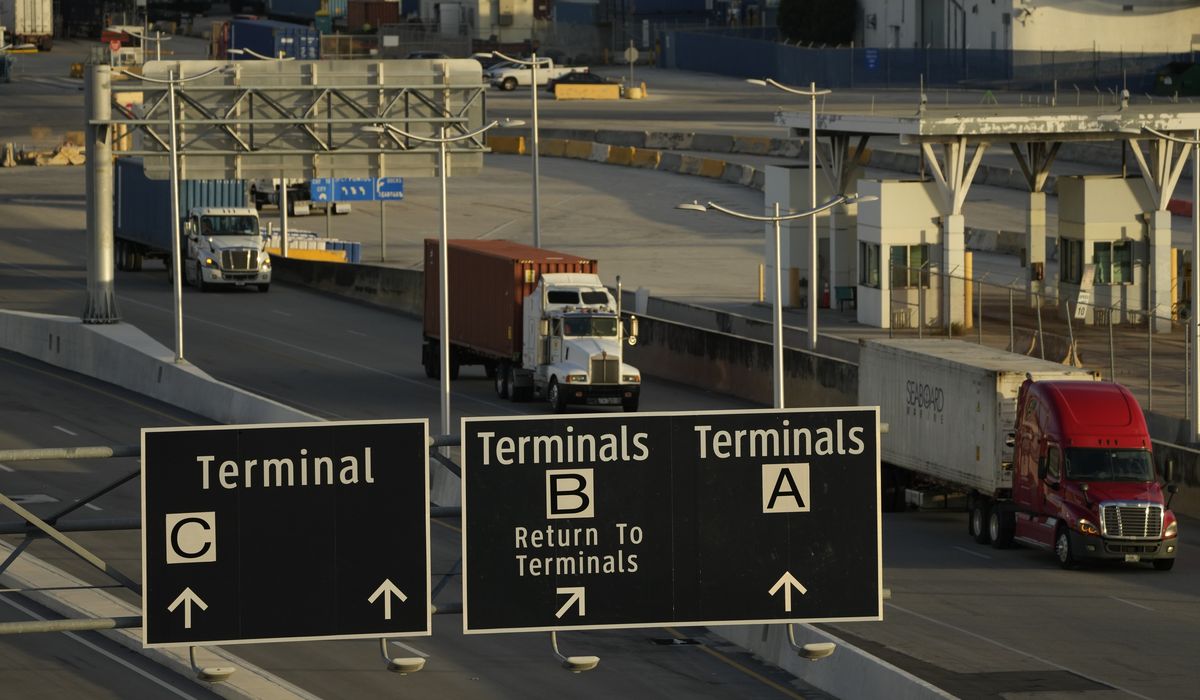
The supply chain crisis and the pandemic have reinforced an economic maxim that executives at manufacturer Acme Alliance in Northbrook, Illinois, have emphasized for two decades: Keep your operations and jobs near your customers.
A maker of custom finished aluminum die-cast components for autos, heavy trucks and agricultural machinery, Acme officials estimate that 20% of their U.S. sales over the past five years have brought back jobs to the U.S.
“We keep telling our customers that the best strategy is to source locally,” said Acme President Mauri Zaccarelli Mendes in an interview. “You reduce your level of inventory, your quality is better, you save a lot of costs with traveling. So finally, after this whole problem with COVID and now these logistics issues that we’ve been seeing all over the world, they realize that it makes a lot of sense.”
Other companies increasingly are following Acme’s example. The rising cost of doing business in China also makes it more attractive to move jobs back to the U.S., analysts say.
The “reshoring” of jobs to the U.S. from overseas is expected to reach more than 200,000 this year, higher than the previous peak of 180,000 jobs in 2017, when the Trump administration’s regulatory relief and business tax cuts were just starting to take effect, according to Harry Moser, president of the Reshoring Initiative, which tracks jobs returning to the U.S.
“The pandemic and the supply chain disruptions that resulted have made companies more aware that being dependent on something that’s coming from halfway around the world, has to get through two ports across the ocean and is coming from a potential adversary, China in this case, that there’s more risk than they thought there was,” Mr. Moser said.
The development has benefited states such as Ohio, which is marketing itself as “an open and secure supply chain location.” At least 37 companies have announced this year the reshoring of a total of more than 12,000 jobs in Ohio, which offers a variety of grants to encourage employers to relocate there.
Foreign direct investment in U.S. manufacturing reached a new record of $1.88 trillion in 2020, according to the National Association of Manufacturers. In 2005, the level was $499.9 billion. NAM said it expects continued growth in this sector, partly due to “more companies reevaluating their supply chain in the midst of current disruptions.”
Among the largest businesses returning U.S. jobs in the past decade are General Motors, Boeing, Toyota, Mahindra, Volkswagen, Volvo, Caterpillar and Intel Corp.
The shortage of semiconductor chips is playing a prominent role in rising foreign direct investment in the U.S.
Samsung Electronics Co. announced last month its plans to build a $17 billion chip-making plant in Taylor, Texas, which is expected to create about 1,800 jobs. The town offered major property-tax breaks to the South Korean giant.
Taiwan Semiconductor Manufacturing Co. plans to spend $100 billion over the next three years to build new chip factories, as does Intel Corp., with proposals for new factories in the U.S. and Europe.
The Biden administration is encouraging more U.S. production of semiconductors and electric-vehicle batteries, and lawmakers are pushing for $52 billion in industry subsidies for new semiconductor-making plants.
The governors of Michigan, Illinois, Wisconsin, North Carolina, Kentucky, Pennsylvania, Kansas and California urged House leaders last month to pass the CHIPS Act, which has been approved by the Senate.
The U.S. accounted for only 12% of global production capacity of semiconductors in 2020 — down from 37% in 1990, according to the Semiconductor Industry Association.
While the relative cost of wages and benefits in the U.S. historically has prompted companies to offshore jobs, wages in China have been rising 10% to 15% per year for the last 20 years, Mr. Moser said. More companies in recent years are looking at a “total cost of ownership” model that factors in trade disputes, increased U.S. competitiveness and rising Chinese wages, he said.
“The Chinese labor costs to make a typical part expressed in dollars is now five times as high as it was 20 years ago, and the U.S. has stayed almost constant,” he said.
Manufacturer Victaulic, which makes pipe-joining systems, announced plans in 2017 to spend tens of millions of dollars expanding plants in the Lehigh Valley of Pennsylvania. Company officials said one consideration was that parts from China could take six weeks to arrive in the U.S., while filling orders from its U.S. operations instead could be done in a matter of days.
Acme Alliance also has plants in China and Brazil but focuses on supplying its customers from the manufacturing source closest to them.
“When you see supply chains that are stretched across the world, and you have any sort of interference, you see what the issues are,” said Matt Thavis, Acme’s director of value stream development. “So our model is we are a global company. We are big believers in regional sourcing. We don’t warehouse any parts here [in the U.S.] that are made in China.”
Despite the firm’s success, Mr. Mendes said Acme is also struggling with late orders due to supply chain problems with vendors who “don’t have enough components to finish the product.” He also said the firm has been unable to fill some positions due to the U.S. labor shortage.
“We are still not able to hire more people. It’s pretty hard,” Mr. Mendes said. “Even if it’s a little bit over average wage, we are not able to get people.”
Mr. Thavis said Acme hasn’t based its decisions on incentives or other policies coming out of Washington.
“We don’t rely on politics to do business,” he said. “We just think that our model makes sense. It’s just the kind of a decree that if you’re going to assemble and sell goods within a region, it makes sense to source those components within that region.”
The progress in bringing back jobs to the U.S. hasn’t completely reversed an offshoring trend that has been decades in the marking. A recent survey by the American Chamber of Commerce in Shanghai found that 71% of U.S. manufacturers had no plans to move production out of China, while only 4% said they would transfer some to the U.S., Barrons reported last year.
And U.S. companies have directly invested about $260 billion in Chinese operations since the early 1990s, according to an analysis from the Rhodium Group.
Still, Mr. Moser says there has been a “tangible shift in corporate decision-making.” He said the shortage of personal protective equipment (PPE) in the U.S. at the start of the pandemic in 2020 accelerated a reshoring process that had already begun.
“Now that makes the companies more sensitive to all these other related disruption issues,” he said.
For more information, visit The Washington Times COVID-19 resource page.








